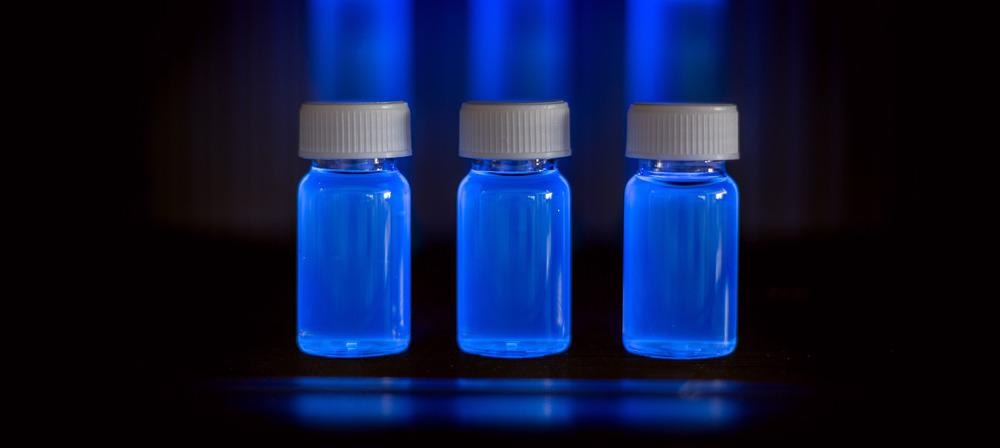 By Surbhi JainJun 15 2022Reviewed by Susha Cheriyedath, M.Sc.
By Surbhi JainJun 15 2022Reviewed by Susha Cheriyedath, M.Sc.In an article recently published in the journal Colloids and Surfaces A: Physicochemical and Engineering Aspects, researchers discussed the Dohelert design (DOE)-based green synthesis optimization of graphene quantum dots (GQDs) for dye photodegradation application.

Study: Green Synthesis Optimization of Graphene Quantum Dots by Dohelert Design For Dye Photodegradation Application. Image Credit: Tayfun Ruzgar/Shutterstock.com
Background
Solid waste generation and proper environmental management are concerns that have arisen as a result of modernization. Brewer's spent grains (BSG) are the principal solid waste generated in the production process. However, this application is hampered by its high organic matter concentration, high humidity, and management challenges.
As a result, nobler uses for the BSG are required, particularly those that benefit from its high carbon content and heterogeneity. As a result, the production of added-value goods from BSGs via green synthesis has recently been investigated, with the goal of achieving a sustainable and low-cost approach while also supporting a zero-waste circular economy.
It is feasible to change a low-value material by synthesizing GQDs from biomass waste. The hydrothermal carbonization (HTC) process for the synthesis of GQDs has gotten a lot of interest. Investigating the features of GQDs by altering two or more parameters and analyzing their photocatalytic efficacy is intriguing. Because of its cost savings, experimental practicality, and the advantage of having distinct levels for each element, the DOE has received a lot of attention among alternative response surface models.
About the Study
In this study, the authors presented the preparation of GQDs by HTC of brewer's leftover grains. In a total of nine trials, the effects of temperature and residence time on the GQDs' characteristics, particularly their photocatalytic activity, were evaluated using the Doehlert matrix design. For the photodegradation experiments, methyl orange (MO) was utilized as a model molecule.
The team demonstrated the photodegradation of MO via a first-order mechanism that consisted of two phases. The GQDs were made from BSG, which was used as precursor biomass. Physical-chemical analytical methods were employed to characterize all of the materials tested, and they were used in experimental photodegradation studies of the methyl orange (MO) dye, which was used as a model molecule.
The researchers used the DOE to optimize the synthesis of GQDs by HTC, with temperature and residence time being the examined variables. The green chemistry concepts were used to synthesize GQDs from brewer's leftover grains in a sustainable manner. The effects of residence time and temperature on GQD properties, particularly photocatalytic effectiveness as measured by methyl orange photodegradation, were verified using a Dohlert Matrix-based experimental methodology.
Observations
The curve was separated into two stages, the first of which lasted from 0 to 120 min (stage 1) and was attributed to the MO adsorption on the surface of GQDs, with a kinetic constant value (k) of 1.00 x 10-3 min-1 and a linear fit with an R2 of 0.97. The second stage, attributable to MO photodegradation and extending from 180 to 600 minutes, had a k of 4.70 x 10-3 min-1 and an R2 value of 0.99. All HTC treatments had QY values between 0.3 and 0.6%, with the exception of treatment 5 at 175 °C for 14 h and treatment 7 at 200°C for 14 h, which had higher values of 4.4 and 4.9%, respectively.
The GQDs had a pH of less than 3.13, a high electric conductivity of 1.0–3.0 mS cm-1, and a positive Zeta Potential. When stimulated by ultraviolet (UV) light at 365 nm, the GQDs sample emitted a blue hue, indicating their nitrogen self-doping. Transmission Electron Microscopy revealed hexagonal rings with zigzag edge formations. The quantum yields of the GQDs ranged from 0.3 to 4.9%. The photocatalytic performance of GQDs generated at 150 °C for 14 hours was the best. The adsorption of MO by GQDs was attributed to stage 1, while the breakdown of MO by and/or O2- radicals was assigned to stage 2.
The GQDs produced at lower temperature conditions performed better. Because the predominant reactive species were the radical O2- and the e-BC, these nanomaterials displayed outstanding photocatalytic capabilities, degraded the methyl orange dye, and proved to be good electron donors.
The results of FTIR analyses and the blue color emission by the colloidal suspension indicated the self-doping of the GQDs with nitrogen. The examination of pH, conductivity, and zeta potential revealed beneficial qualities for the material's interaction with the methyl orange.
Conclusions
In conclusion, this study elucidated the preparation of green synthesis produced GQDs with photocatalytic activity, contributing to a sustainable and circular dynamic in industrial processes.
The authors also demonstrated the potential relevance of green manufactured GQDs as nanocatalysts, as well as the importance of investing in research that contributes to a zero-waste dynamic by transforming waste into new materials with additional value.
More from AZoM: What is Glow Discharge Optical Emission Spectrometry
Source
Dutra, L. V., Michalczuk, A., Paszkuta, M., et al. Green Synthesis Optimization of Graphene Quantum Dots by Dohelert Design For Dye Photodegradation Application. Colloids and Surfaces A: Physicochemical and Engineering Aspects 129442 (2022). https://www.sciencedirect.com/science/article/abs/pii/S0927775722011979
Disclaimer: The views expressed here are those of the author expressed in their private capacity and do not necessarily represent the views of AZoM.com Limited T/A AZoNetwork the owner and operator of this website. This disclaimer forms part of the Terms and conditions of use of this website.